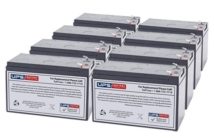Flow of electric charge in a conductor, between two points of different electric potential is called an electric current. So we need these things for an electric current to flow:
ü Moving electric charge
ü Suitable medium, called conductor
ü Potential difference between two points
Electrons or ions can be the charge carriers.
A metal or electrolyte can be the suitable medium, called electrical conductor. Any liquid or gel that has ions and can be decomposed by electrolysis is called an electrolyte.
Difference in electrical energy between two points is called potential difference between those two points. As discussed in a previous post, electricity flows from a point of higher potential difference to appoint of lower potential difference.
The SI unit of measurement of electric current is ampere or amps. This unit is named after physicist Andre-Marie Ampere, who postulated Ampere’s Force Law that became the basis of defining ampere.
Types of Electric Current
Electric current is categorized as Alternating Current (also AC or ac) and Direct Current (also DC or dc) depending on the direction of flow of current. In direct current, electricity flows in one direction. Such power is generated by batteries, solar cells, etc. In alternating current, the direction of current keeps reversing at fixed intervals. The power supply in our homes and offices is in AC form. These two forms are shown in Figure 1.
Figure 1: AC and DC currents
Effects of Electric Current
When electric charges pass through a conductor, be it metal, electrolyte or plasma, collision between the moving charged particles and static conductor atoms produces heat. This heat resists the flow of electricity. The most common example of this phenomena is a filament bulb. If you touch a filament bulb sometime after switching on, you will feel that it’s hot.
A wire carrying electric charge induces a magnetic field around it. This was demonstrated by Ampere and laid the foundation of Electromagnetics in Physics. The reverse is also true. That is, if a conducting wire is placed in a changing magnetic field, electricity can flow through it.
Electric current is what powers our life, from fans, lights, refrigerators, televisions to laptops and mobiles. Be it the necessities of life or the luxuries, there is no denying that the teeny weeny electron is what charges them all up!!
Related articles:




